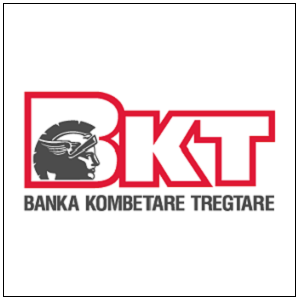Technology
The Cybersecurity Poverty Trap: Why Small Businesses Are Easy Targets

- The rising threat of cyberattacks shadows small businesses with a cycle of cyber poverty, approaching security at stake, yet funded through scant resources.
- For SMEs, taking action to break this cycle and adjust their defences can be achieved via cheap but highly scalable security solutions and easy staff training.
In an ever-shifting digital realm, cybersecurity is not just a technical concern but an essential element in doing business. The big corps are throwing in millions for fancy security defences, although smaller and medium-sized companies are being distanced miles away. This gap has rather built up a ‘cybersecurity poverty trap,’ a cruel cycle where a lack of quantity or quality budgets, outdated kits, and exciting cyber threats leave small businesses wide open.
The Growing Global Divide in the Cyber World
Cybercrime is currently overwhelmingly skyrocketing throughout the world. In 2023, around the globe, businesses spent over $106.8bn on cybersecurity, almost twice how much the industry will have grown to almost $200bn by 2028. Major corporations are heavily investing in state-of-the-art solutions such as the zero-trust model, AI-powered threat detection, and automated security protocols to thwart the ever-growing sophisticated levels of threats.
While large corporations are busy shoring up their defences, SMEs are falling far behind. Despite the similar risk, SMEs find it difficult to keep up most of the time due to insufficient financing and in-house expertise. This has left two tiers of protection, where the major corporations enjoy wonderful security, while SMEs suffer.
The Relevance of Small Business Vulnerabilities
Large companies do not come under the threat of cyberattacks alone; smaller firms face a nearly equal threat since their network security measures are relatively weaker. Once smaller companies are penetrated, the effects can be felt throughout an entire industry.
Supply chain attacks are becoming more prominent; small businesses have weaker defences and so can be an easy target for cybercriminals who view them as a possible way into much bigger companies. Once breached, major damage can include every service in the quality chain; they become associated with great financial losses, corporate image destruction, and loss of faith among customers, especially if they are in a profession that might affect larger businesses.
Victim of a Vicious Circle of Cybersecurity
The cybersecurity poverty trap refers to a situation in which businesses find themselves caught in a cycle where they are too poor to invest in security. As attacks keep coming from attackers, whose radar they remain on, an enterprise could find itself cycling down the drain from a security breach on scarce resources, which is not left to chance for more robust security.
The prototype goes with this: small and medium enterprises (SMEs) with limited budgets use outdated software security or hardly traceable free tools, leaving them susceptible to hackers because they would funnel their attention to businesses where their defences are weak. When an SME is hit, a loss of data, money, and, sometimes, fines occurs due to regulatory actions, which pushes it further down the black hole of debt, for there are no resources left to invest back into security, rendering them a primary target for a repeat attack.
According to a UK government report, 38% of SMEs experienced cyberattacks in 2023, with phishing and ransomware being the leading threats. In contrast, a Sapio Research survey revealed some disturbingly significant disparities. While for 90% of tech startups, cybersecurity is a priority, only 2% have a rigorous security strategy. However, 54% of them have already tinkered with cyber incidents, contrary to any opinion they might hold that they are well protected (63%). These figures, which reflect a tendency to feel falsely reassured, are indeed dangerous: as many SMEs think they are safe until they – or anyone else – becomes the victim.
How SMEs Can Break Free from the Cybersecurity Poverty Trap
Exiting this loop does not require a large budget but simply smart decisions. This article is aimed at giving tips to small businesses on how they can upscale their defence measures without putting a dent in their pockets.
The first of these steps is all about having named cyber hygiene. Simple and rather low-cost measures can cut down many risks. First, the MFA (multi-factor authentication) safeguards the system against unauthorised access. Next, periodic software updates will do the best for your business as they deal with well-known vulnerabilities, while strong password guidelines work to check credential theft issues.
Investing in scaling security solutions is yet another decent strategy. Compared to the purchase of an expensive on-premises setup, small businesses can always go the way of cloud security platforms. This kind of security gives lots of possibilities and flexibility, making solid protection available while still being affordable and scalable as the business grows.
Employee training is a must, similarly. Another pressing threat in cybersecurity is human error. Regular employee training on phishing scams, social engineering attacks and data protection goes a long way in reducing breaches arising from deception.
Consequently, the regular risk assessment is a crucial element. SMEs need to conduct regular penetration tests and vulnerability scans to identify the holes that need plugging before attackers can exploit them.
For the companies that do not hold in-house expertise, MSSPs (Managed Security Service Providers) can be the best solution to allow access to high-quality security expertise immediately and without necessitating the hiring of full-time staff. This allows SMEs to draw on protection expertise at much less than the cost of needing to hire an in-house team.
The Vendor’s Role, Integrity, and Scope of Security Reviews
This has been an exclusivist strategic tool for many years. There are, however, some good reasons for the agencies being reluctant to entertain security reviews. For one thing, there is the challenge of sustainability. They may see the security field reliance growing as one of its concerns.
In line with growing threats facing SMEs, different governments have chipped in to offer help. In the UK, for instance, the Cyber Essentials scheme provides certification and resources to help small businesses start guarding themselves against common threats. In the States, the Cybersecurity and Infrastructure Security Agency (CISA) provides assessment and assistance tools so smaller businesses can try to protect themselves by aligning with the good intentions of the administration.

















































